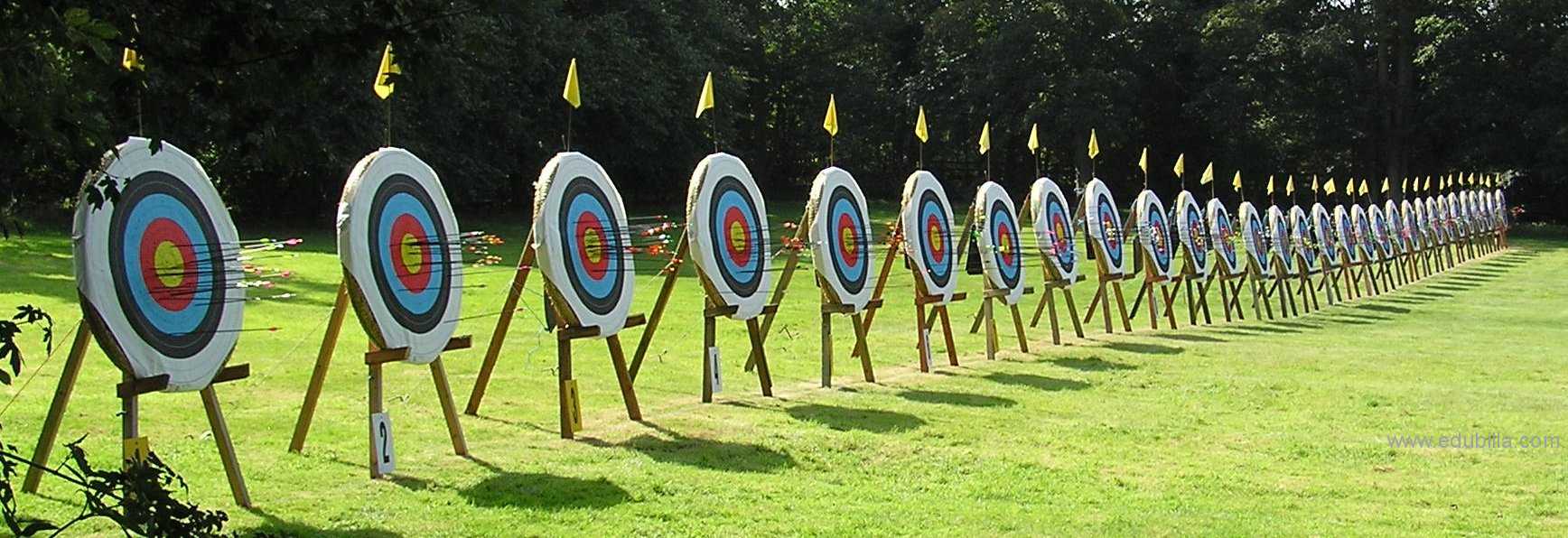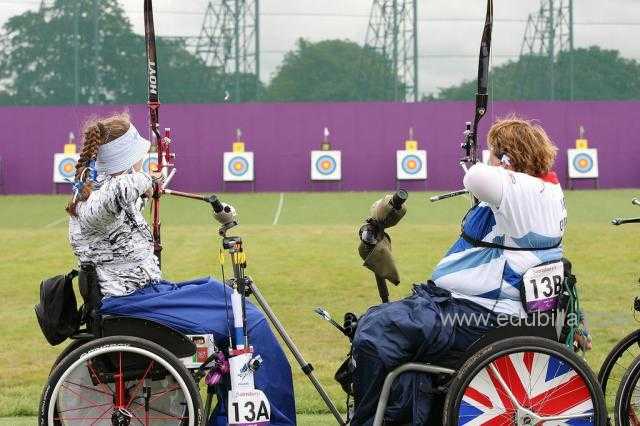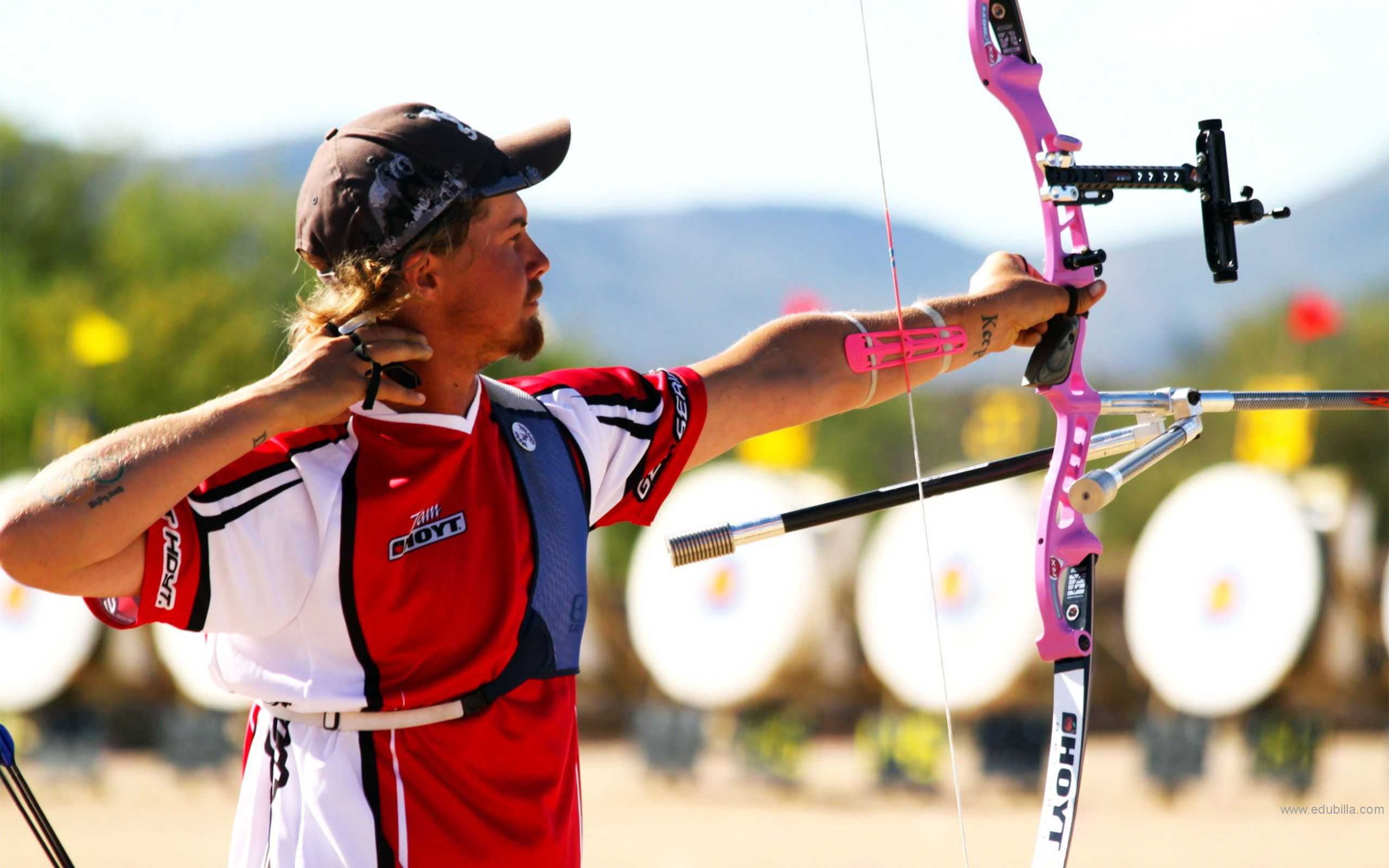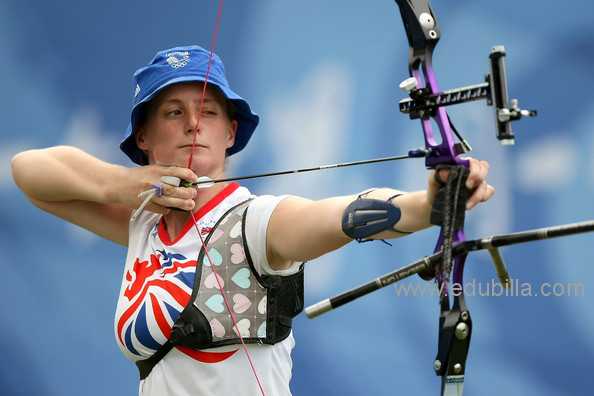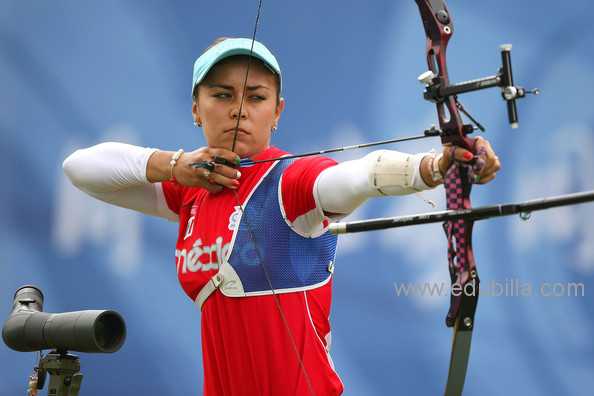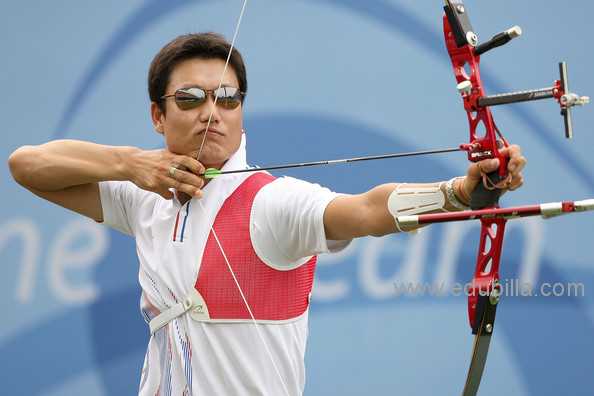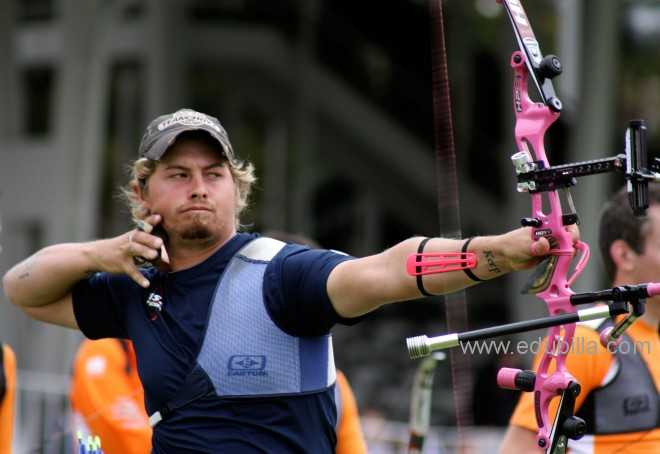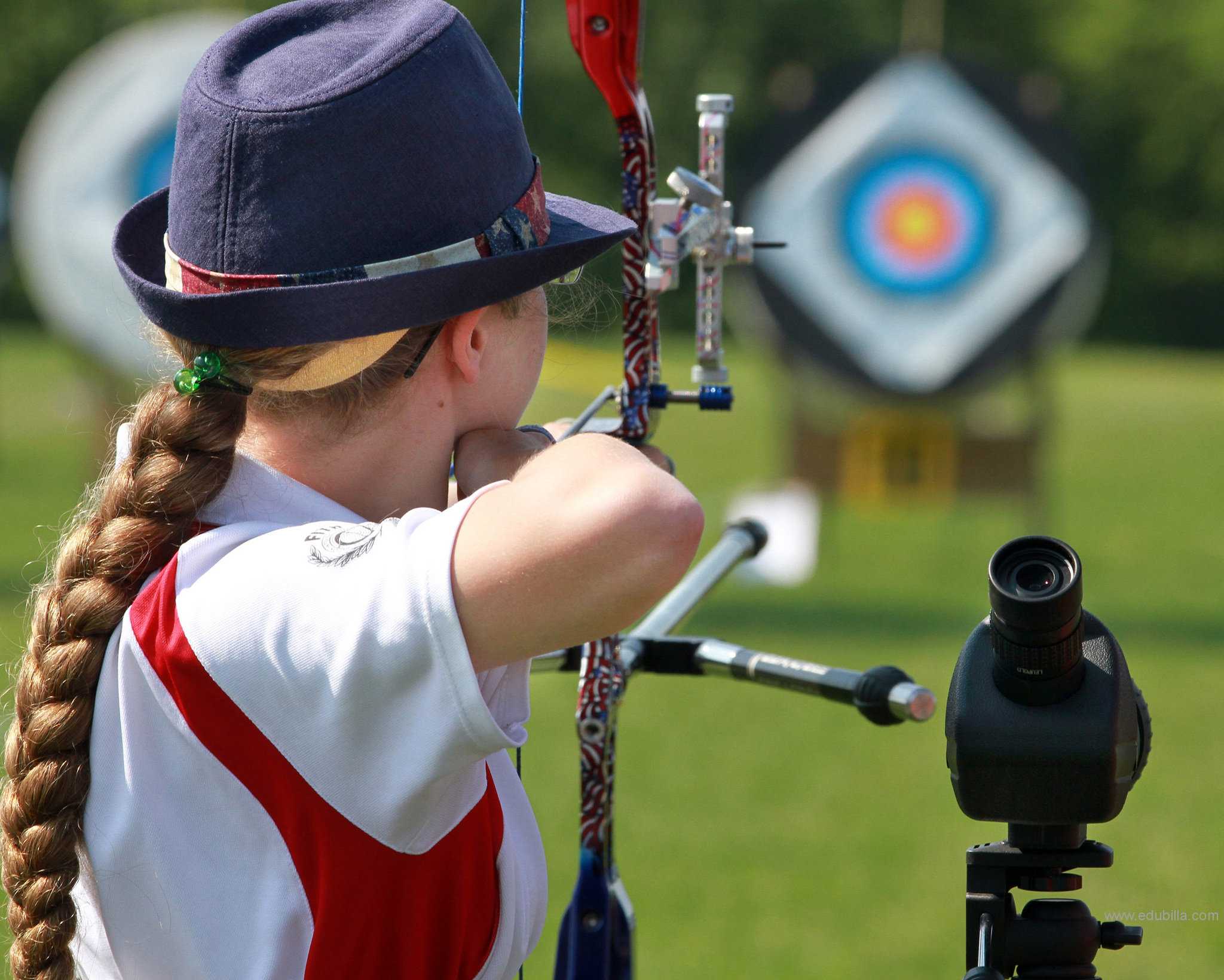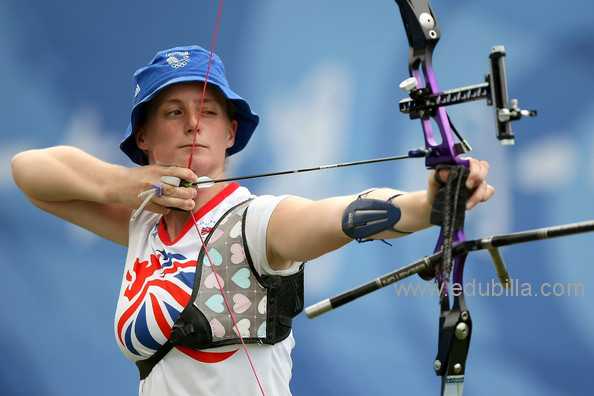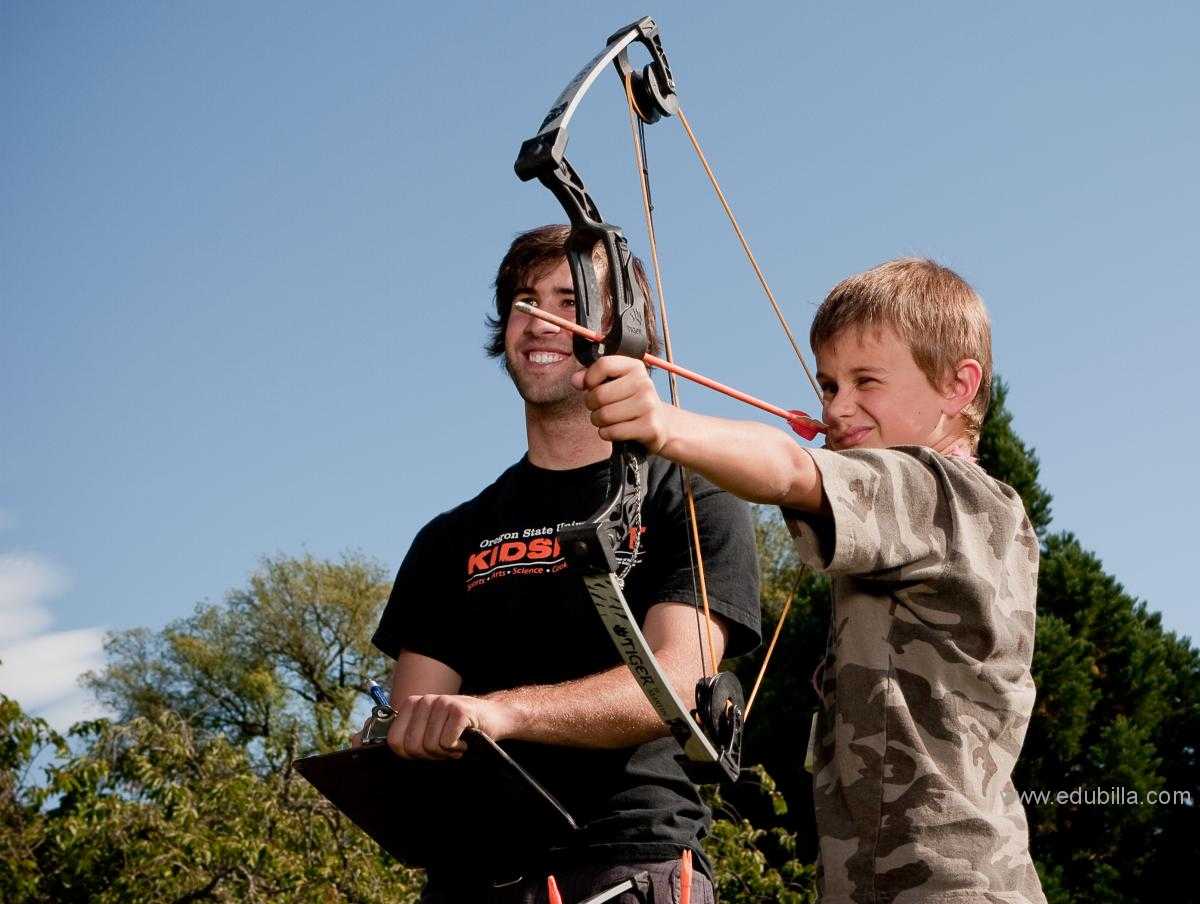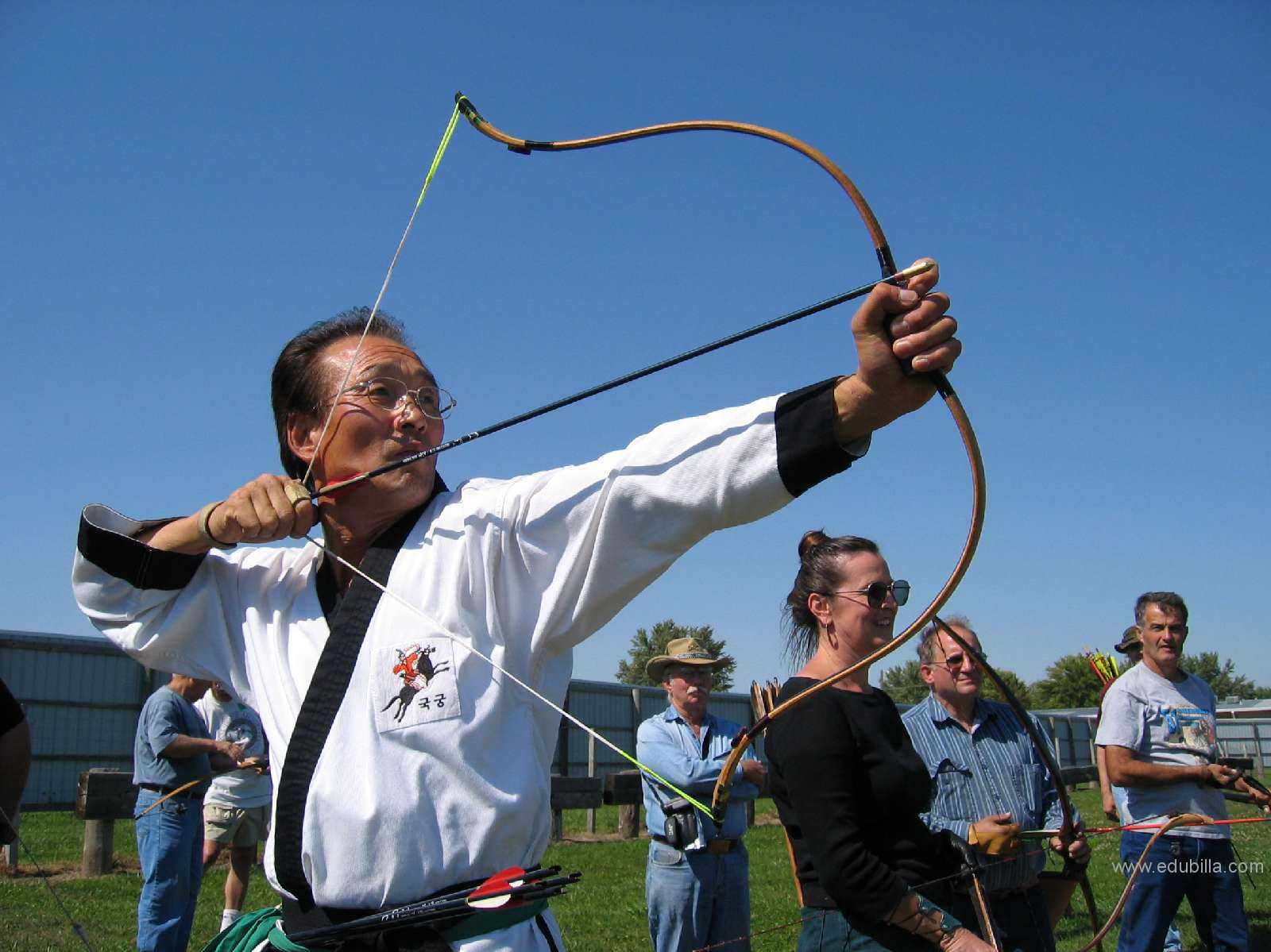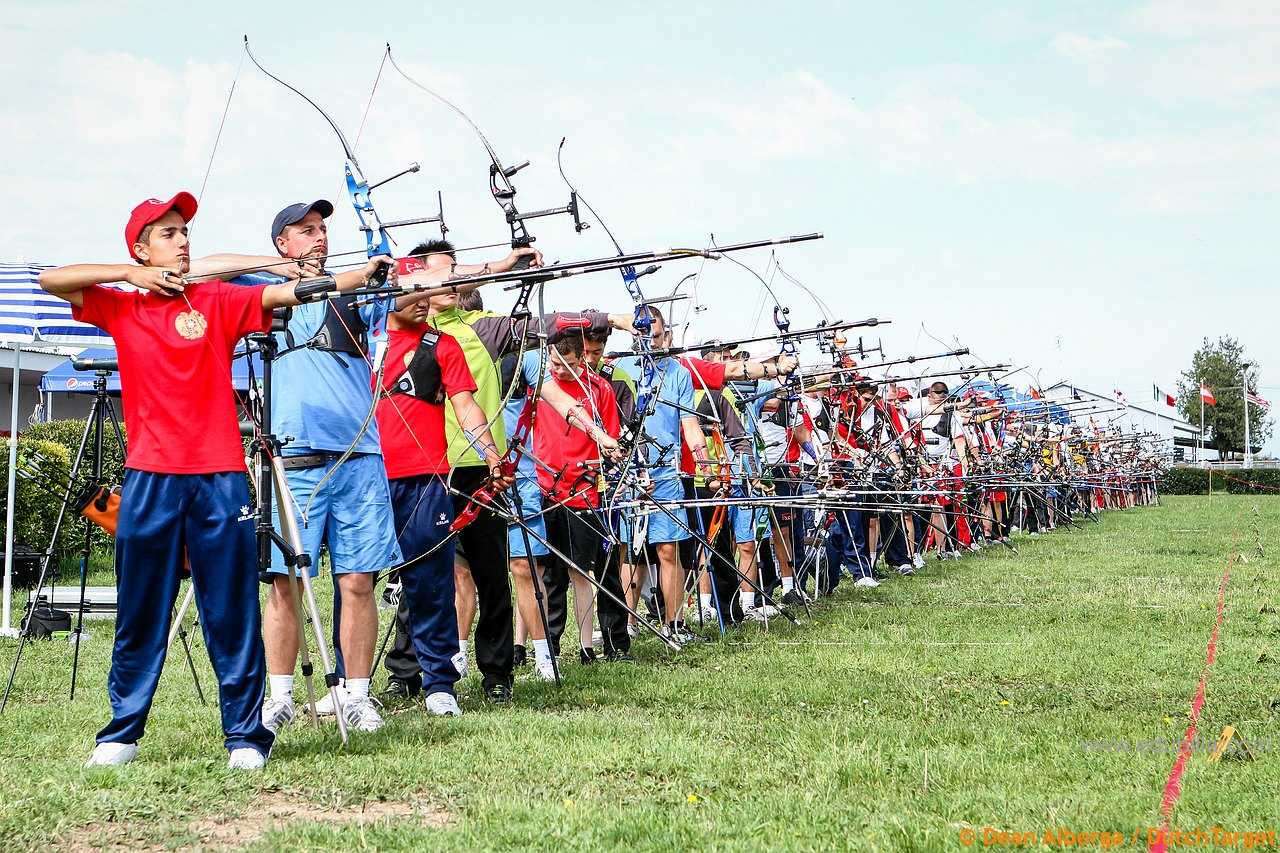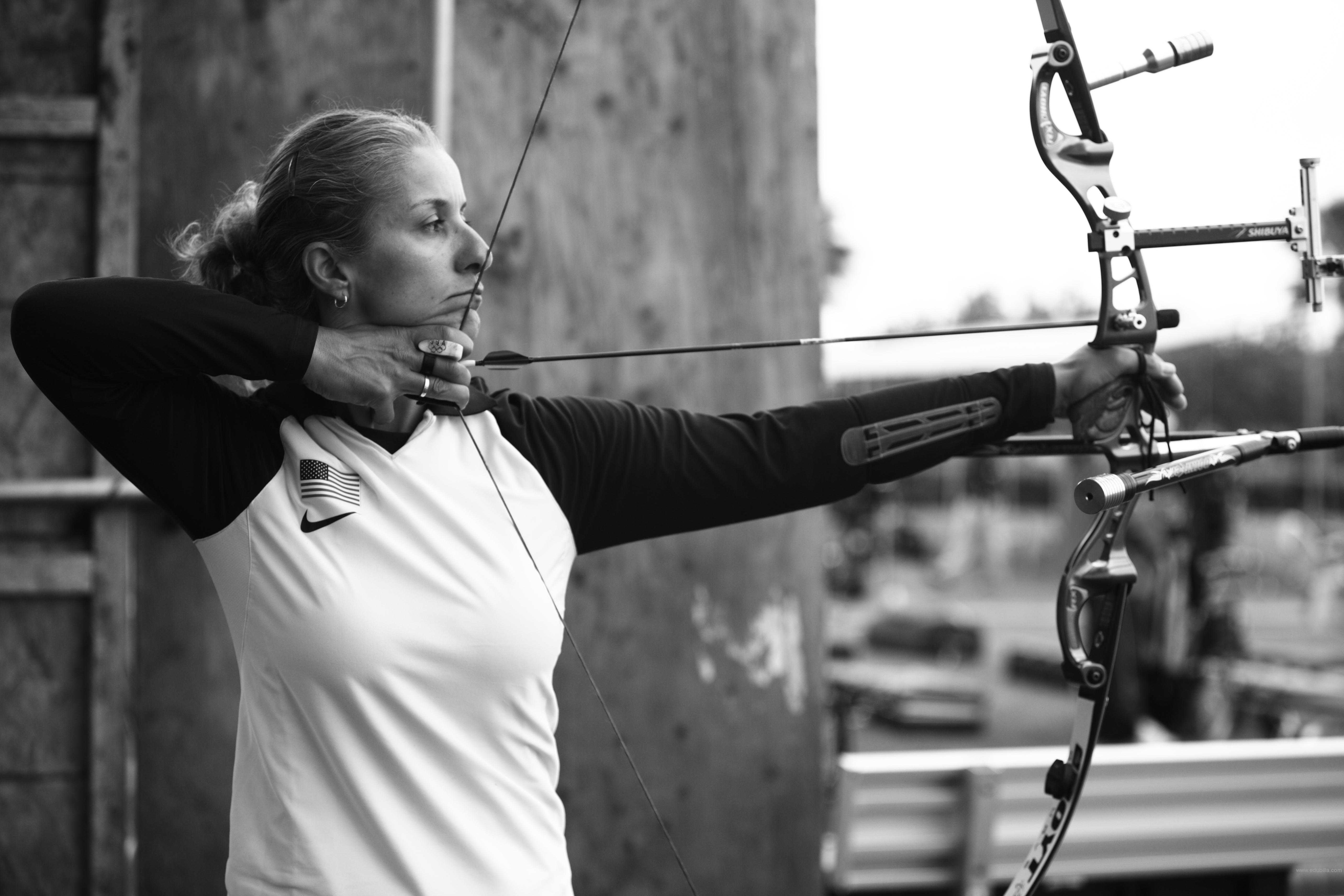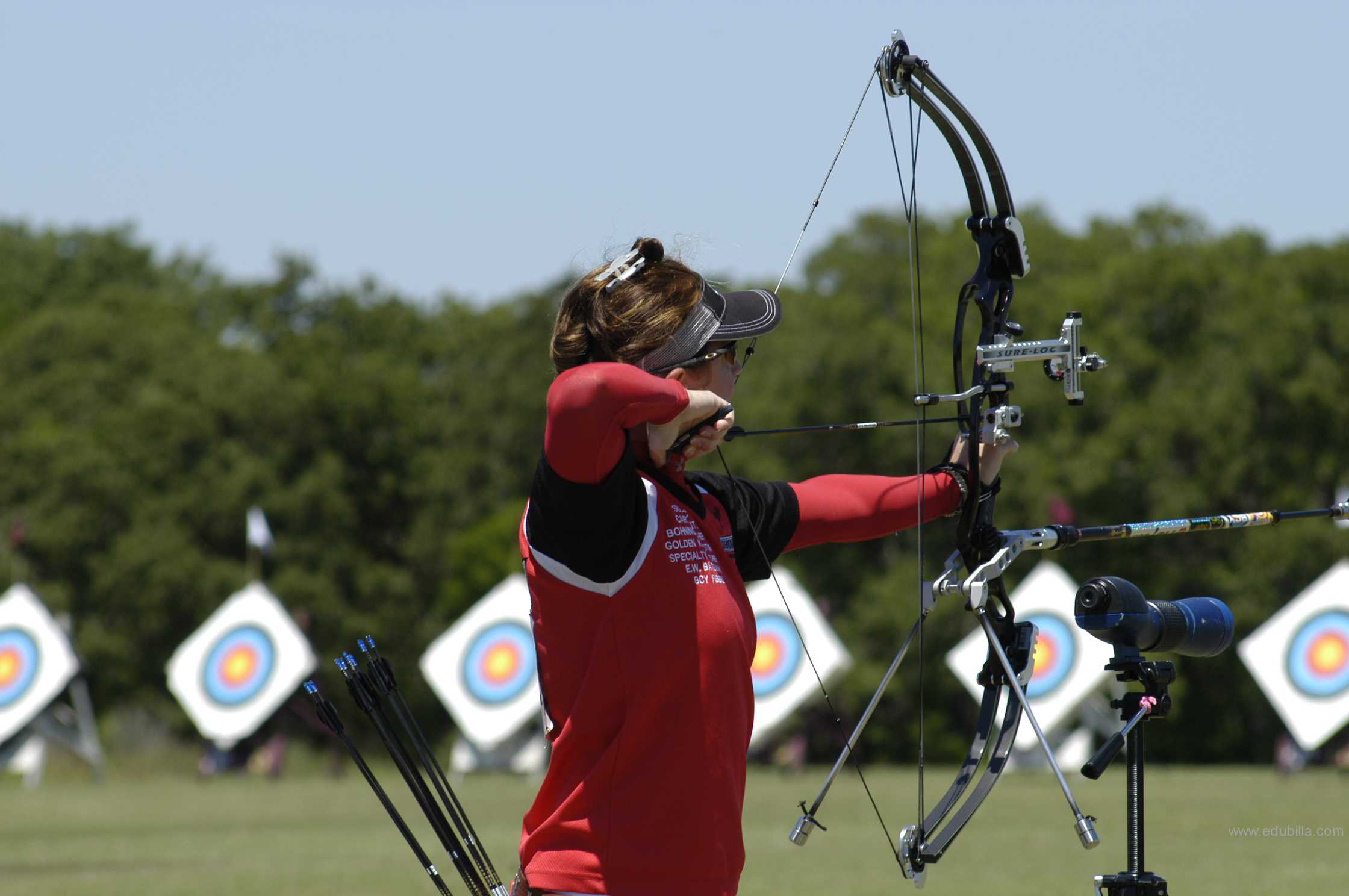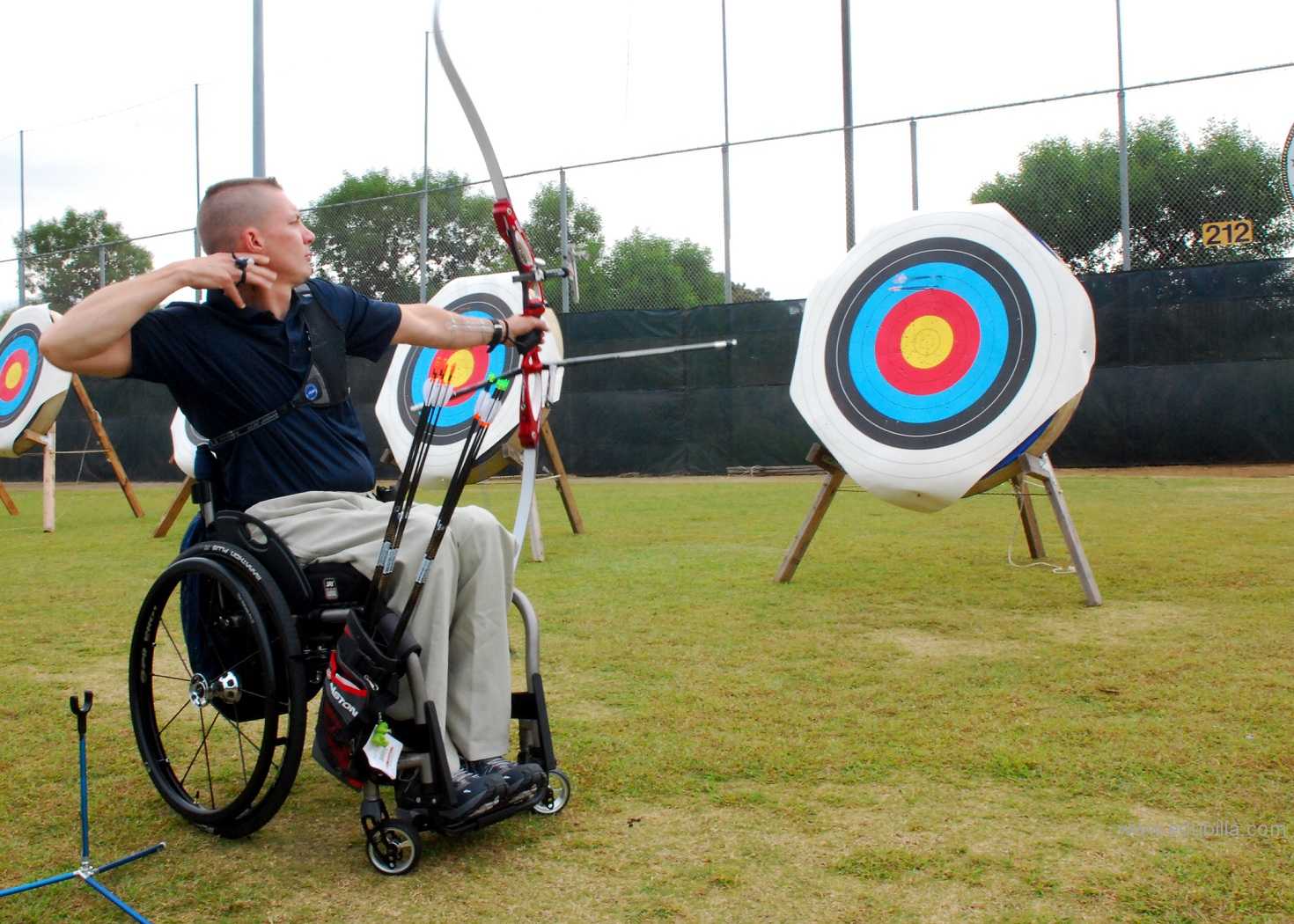
Overview Of Archery
Archery is the practice or skill of propelling arrows with the use of a bow. The word comes from the Latin arcus. Historically, archery has been used for hunting and combat. In modern times, it is mainily a competitive sport and recreational activity. A person who participates in archery is typically called an archer or a bowman—and a person who is fond of or an expert at archery is sometimes called a toxophilite.
Archery was introduced for the first time at the Games of the II Olympiad, Paris 1900. It was then included on the programme of the 1904, 1908 and 1920 Games before disappearing for over 50 years. The Games of the XX Olympiad, Munich 1972, saw the re-introduction of archery on the Olympic programme. Women were able to compete in archery events at the 1904 and 1908 Games,then again, like the men, in 1972.
Game Rules
ARCHERY SAFETY TIPS AND RULES
Every sport has rules and archery is no exception. The good news is that archery’s rules are clearly defined and very simple to understand. Below, you’ll find the basic guidelines of most archery ranges,. Still, archers are strongly encouraged to work with the certified archery instructor at their local range or pro shop to understand each location’s unique rules.
On the archery range, safety is the first priority. Though archery is one of the safest sports, rules are designed to keep everyone safe and to facilitate fair play in competition.
FIRST, THERE ARE 3 KEY TERMS.
The waiting line is exactly what it sounds like: a line that keeps archers in a designated waiting area until it’s their turn to begin shooting. In reality, this line can be a few yards or several feet behind the shooting area, but it is almost always clearly designated.
The shooting line mark where archers stand when actually shooting their bows. In World Archery and USA Archery sanctioned target archery tournaments, archers stand with one foot on either side of this line. In National Field Archery Association tournaments, archers stand directly behind the line.
The target line is often present at archery ranges, and is a line about 3-4 feet in front of the targets, which acts as a “speed bump” for younger archers approaching the targets to pull their arrows. Some instructors will ask archers to wait at the target line and take turns advancing to retrieve their arrows.
SO HOW DO THESE LINES ACTUALLY APPLY TO SHOOTING?
Archers have to have a way of communicating with pro shop staff or coaches, and this communication is done using a whistle system. USA Archery, which follows World Archery rules, recommends the following whistle commands:
Two whistle blasts: archers may proceed from the waiting line to the shooting line.
One whistle blast: archers may place an arrow on the bowstring and begin shooting.
Three whistle blasts: archers may walk forward to the targets and pull their arrows.
Four or more whistle blasts: stop shooting immediately.
WHEN PULLING ARROWS, THERE ARE A FEW EXTRA GUIDELINES THAT MUST BE CAREFULLY OBSERVED.
-Archers are always expected to walk on the archery range.
-When retrieving arrows, archers approach the target slowly and go to either the right or left side of the target to pull.
-Archers always look behind them carefully before pulling each arrow.
Additional guidelines may apply. All archers are advised to follow the rules of the archery range where they choose to shoot, and obtain the advice of a certified instructor, including guidelines for those who are competing.
Equipments Need For Archery
Armguard:
A guard that, when an arrow is shot, protects the arm from being hit by the bowstring.
Arrow:
Arrows have a maximum diameter of 9.3 millimetres, although, for faster flight and less wind drift, most are as small as 5.5 millimetres. Each arrow must be marked with the competitor's name or initials, while archers use distinctive colours for the nocks and vanes to distinguish their arrows.
Bow:
The bow’s draw weight is around 22 kilograms (48 pounds) for men, and over 17 kg (38 lbs.) for women. The bow consists of a riser and two limbs.
Bowstring:
The string of a bow.Most strings are made of high-tech polyethylene fibres, which are stronger than steel.
Chestguard:
Plastic or leather, to keep clothing out of the way and to protect against a bowstring at release from injuring the body.
Finger tab or shooting glove:
A flat piece of leather worn as a guard to protect the finger when the arrow releases.
Fletching:
The real or artificial feathers at the back of an arrow designed to make it fly straight.
Hand grip or handle:
The handle of the bow.
Quiver:
A container for holding arrows, usually worn around the waist.
Nock:
The attachment on the rear end of an arrow that holds it in place on the bowstring.
Sight:
A mechanical device placed on the bow to help the archer aim; also called a "bowsight".
Stabiliser:
A weight mounted on the bow to stabilise it during and after a shot.
Target:
The target is 1.22 metres (48 inches) in diameter, but, to the archer, standing those 70 metres (86.4 yards) away, it appears about the size of a thumbtack held at arm's length. The centre of the target stands 1.3 metres above the ground. The centre ring is 12.2 centimetres (4.8 in.) in diameter. There is also a smaller X10-ring, which is 6.1 centimetres (2.4 in.) in diameter. It does not give extra point, but it serves as tie-breaker for the archers during qualifications or for world record.
History Of Archery
Archery, one of the oldest sports still practiced, is closely linked to the development of civilisation. As a cultural advance, it was comparable to the discovery of fire and the invention of the wheel.
Archery in battle:
In 1200 BC the Hittites and Assyrians shot their bows from chariots, becoming fearsome opponents in battle. They made their bows with tendon, horn and wood and also developed a new re-curved shape. This made their bows shorter and more powerful, making them easier to handle for an archer on horseback.
A noble history:
Archery was the favourite sport of the Egyptian pharaohs during the 18th dynasty (1567-1320 BC). Many centuries later, some of the earliest recorded archery tournaments took place during the Zhou (Chou) dynasty (1027- 256 BC) in China. Such events were attended by Chinese nobility. Much later, English writers honoured the longbow for famous contributions to their country’s victories in the battles of Crécy, Agincourt and Poitiers.
Most Decorated Archer:
Archery first appeared in the Olympic Games in 1900, was contested again in 1904, 1908 and 1920, then again, after an absence of 52 years, from 1972 to the present. The most decorated archer in Olympic history is Hubert Van Innis of Belgium who competed in 1900 and 1920, winning six gold and three silver medals.
Origin Of Archery
The bow and arrow are known to have been invented by the end of the Upper Paleolithic.
Projectile points (used on spears or atlatl darts) are known from earlier prehistory, dating to the Middle Paleolithic. Bows eventually replaced spear-throwers as the predominant means for launching sharp projectiles on all continents except Australia.
Archery was an important military and hunting skill before the widespread and efficient use of firearms, throughout classical antiquity and the medieval period. Arrows were especially destructive against unarmoured masses and the use of archers often proved decisive. Mounted archers combined range with speed and mobility. Archery is also featured prominently in the mythologies of many cultures.
Mounted archery:
Central Asian tribesmen (after the domestication of the horse) and American Plains Indians (after gaining access to horses) became extremely adept at archery on horseback. Lightly armoured, but highly mobile archers were excellently suited to warfare in the Central Asian steppes, and they formed a large part of armies that repeatedly conquered large areas of Eurasia. Shorter bows are more suited to use on horseback, and the composite bow enabled mounted archers to use powerful weapons.Empires throughout the Eurasian landmass often strongly associated their respective "barbarian" counterparts with the usage of the bow and arrow, to the point where powerful states like the Han Dynasty referred to their neighbours, the Xiong-nu, as "Those Who Draw the Bow"
Decline of archery:
The development of firearms rendered bows obsolete in warfare. Despite the high social status, ongoing utility, and widespread pleasure of archery in Armenia, China, Egypt, England, America, India, Japan, Korea, Turkey and elsewhere, almost every culture that gained access to even early firearms used them widely, to the neglect of archery. Early firearms were vastly inferior in rate-of-fire, and were very susceptible to wet weather. However, they had longer effective range and were tactically superior in the common situation of soldiers shooting at each other from behind obstructions. They also required significantly less training to use properly, in particular penetrating steel armour without any need to develop special musculature. Armies equipped with guns could thus provide superior firepower, and highly trained archers became obsolete on the battlefield. However, the bow and arrow is still an effective weapon, and archers have seen action in the 21st century.Traditional archery remains in use for sport, and for hunting in many areas.
Eighteenth-century revival:
Early recreational archery societies included the Finsbury Archers and the Kilwinning Papingo, established in 1688. The latter held competitions in which archers had to dislodge a wooden parrot from the top of an abbey tower. The Company of Scottish Archers was formed in 1676 and is one of the oldest sporting bodies in the world. It remained a small and scattered pastime, however, until the late 18th century when it experienced a fashionable revival among the aristocracy. Sir Ashton Lever, an antiquarian and collector, formed the Toxophilite Society in London in 1781, with the patronage of George, the Prince of Wales.
Mythology:
Deities and heroes in several mythologies are described as archers, including the Greek Artemis and Apollo, the Roman Diana and Cupid, the Germanic Agilaz, continuing in legends like those of Wilhelm Tell, Palnetoke, or Robin Hood. Armenian Hayk and Babylonian Marduk, Indian Arjuna, Abhimanyu, Eklavya, Karna, Bhishma, Drona, Parashurama Rama, and Shiva, and Persian Arash were all archers. Earlier Greek representations of Heracles normally depict him as an archer.
The Nymphai Hyperboreioi were worshipped on the Greek island of Delos as attendants of Artemis, presiding over aspects of archery; Hekaerge , represented distancing, Loxo , trajectory, and Oupis , aim.
In East Asia, Yi the archer and his apprentice Feng Meng appear in several early Chinese myths, and the historical character of Zhou Tong features in many fictional forms. Jumong, the first Taewang of the Goguryeo kingdom of the Three Kingdoms of Korea, is claimed by legend to have been a near-godlike archer. Archery features in the story of Oguz Khagan.
In West African Yoruba belief, Osoosi is one of several deities of the hunt who are identified with bow and arrow iconography and other insignia associated with archery.
Governing Bodies
World Archery Federation:
The World Archery Federation is the governing body of the sport of archery. It is based in Lausanne, Switzerland. It is composed of 156 national federations and other archery associations, and is recognised by the International Olympic Committee.
History:
ITA was founded on 4 September 1931 in Lwow, Poland. Its seven founding member states were France, Czechoslovakia, Sweden, Poland, the United States, Hungary, and Italy. The aim of the organization was to create regular archery championships, and to return archery to the Olympic Games (the sport had not been featured since 1920). FITA was finally successful in returning archery to the Olympic program in the 1972 Summer Olympics.
To celebrate the organization's 80th anniversary in July 2011, a large majority of the FITA Congress voted to change the name from FITA to the World Archery Federation or WA.
Events:
Summer Olympics:
Archery was first competed at the Summer Olympic Games in 1900 and, after a long hiatus from 1924, became a regular event from 1972. Team events were added in 1988. Recurve archery is currently the only discipline competed at the Olympics.
Archery is also competed at the Summer Paralympics (recurve and compound disciplines), the Youth Olympic Games (recurve only), and the World Games (Field archery only).
World Cup:
The Archery World Cup is an annual event that was inaugurated in 2006. It is designed to present archery in 'spectacular' locations.
The format consists of 4 rounds competed across the world during a calendar year. The best individual and mixed team performers across these rounds are then invited to compete in the World Cup Final at the end of the year.
World Championships:
FITA began holding Target World Championships in 1931. They were held every year until 1959, when the Championships became biennial events. 1959 was also the first year that FITA held the World Field Championship.
Presently, there are five principal formats of the World Archery Championships: Outdoor, Indoor, Youth, Para-Archery, and Field. Each is held every two years on different rotations. World Championships are also held every two years in 3D archery and University sport. In 2007, a ski archery World Championships was held in Moscow; this is yet to be repeated and is not included in the current rotation.
Other:
Archery is an optional sport at the Universiade and the Commonwealth Games.
To Visit WA Click Here
Awards Related To Archery
Archery GB Progress Awards:
The Archery GB Progress Awards are designed to provide beginners and younger archers with awards for developing their archery skills. The junior age groups are aligned with educational key stages. The scheme can also be used as an adult beginner incentive.
The scheme is open to all archers and is operated by archery clubs or by schools, youth groups and similar who practice target archery. There is no requirement for the recipients to be members of Archery GB, although many will be.
Junior Tassel Award for Clout Shooting:
First introduced in 1996 within the boundaries of Northern Counties and later adopted nationally, the scheme is nationally run by the Northern Counties Archery Society, which administers the scheme and issues the awards. The score bands for awards are the same as for the senior awards. Claims can be made for a score obtained shooting the distance for your own age group or above. Once a 'higher' Tassel Award is claimed (Black, Blue, Red or Gold) a claim for the 'missing' Tassel award can only be made when you move up to the next age band.
Handicap Improvement Medal:
There is also a Handicap Improvement Medal which is awarded by a club to the club member that achieves the greatest handicap improvement over a calendar year. The award is open to all members and the medal is loaned by the club as it is property of Archery GB.
FITA Beginners Awards:
The FITA beginners award scheme is a great way for beginners to measure their progress as they develop. The awards measure archery scores, skill development and knowledge.
FITA Beginners Awards: FITA Arrow
These are for beginners over the age of 12. Beginners will be tested on archery scores, skill development and knowledge. Different coloured awards are available depending on the distance to be shot over
FITA Beginners Awards: FITA Feather
Red and Gold feather awards are available, testing shooting skills across different distances and different knowledge sets. These are designed for beginners under 12 years old and some disabled new archers. It is up to your coach to decide when you are ready for this award, FITA does not require proof of age or disability.
FITA Silver Star awards:
The FITA silver star badge can only be gained at a World Record or FITA Award Status event shooting a cadet round. The FITA Silver Stars are for archers under 16 ('cadets') shooting a cadet round. Badges for recurve archers are shield shaped, while badges for compound archers are round.
Junior Rose Awards:
Junior archers shooting a recurve, compound or longbow can claim a rose award when shooting at a UK Record Status York, Hereford or Bristol I-V tournament that has been given 'Rose Award' status. You will need to shoot the round relevant to your age group to claim this award.
Arrow Awards:
Arrow Award for Juniors are open to juniors of the Society under 16 years of age and are in the form of Red, Blue and Black badges. Juniors may only claim the award once in each age group, but may shoot for an award in age groups above, but not below, their own. Archers submitting valid claims for awards higher than their age group may also claim the lower awards down to their age group, providing they have not been claimed previously. Four rounds are required to be shot to make a claim in any calendar year, at least one must be a FITA / Metric round, and at least one must have been shot in an open competition. The eligible rounds and score levels required in each age group are published in the Shooting Administrative Procedures.
Sample Documents Of Archery
-Viswanathan Anan

